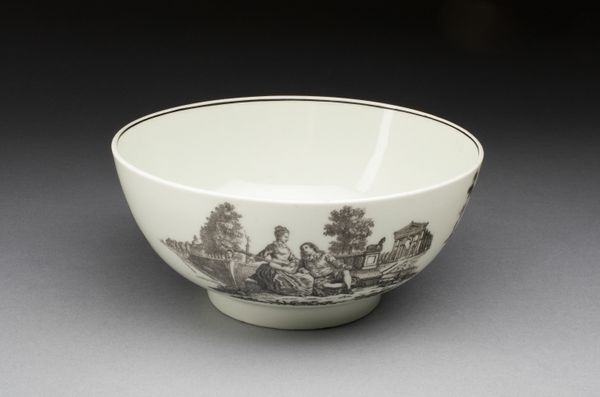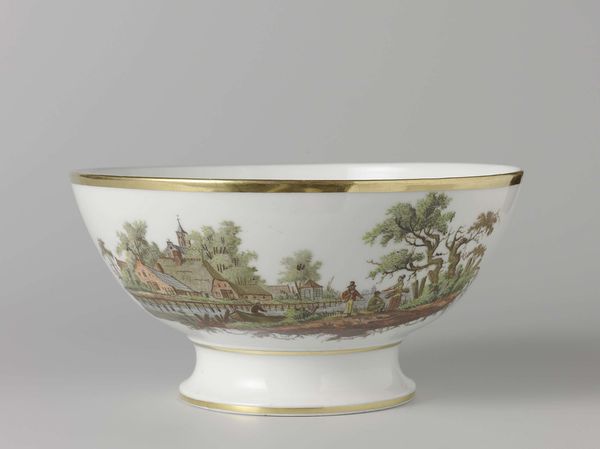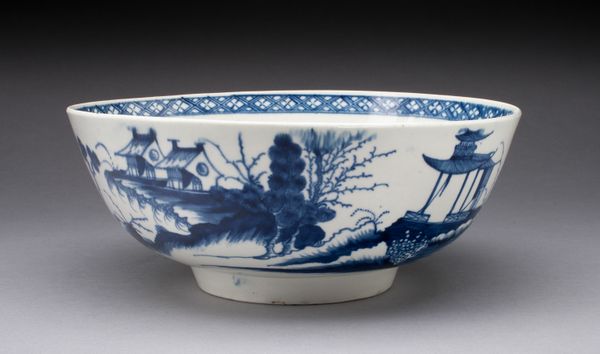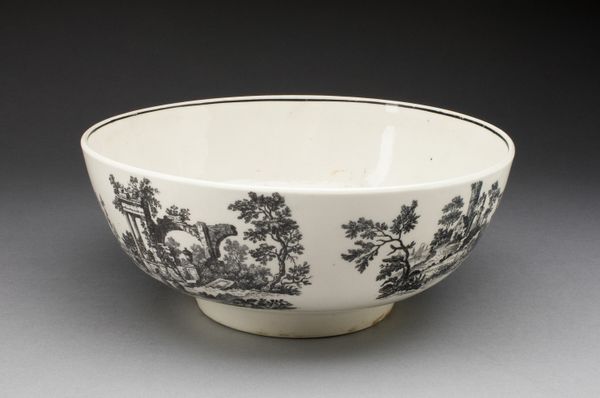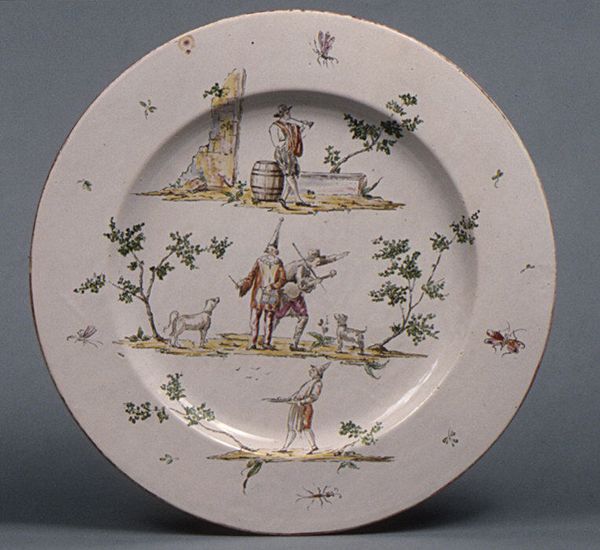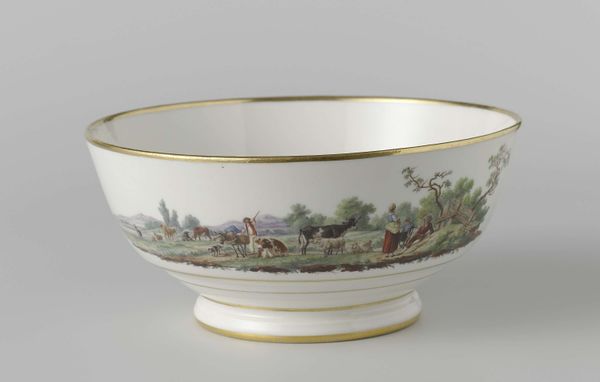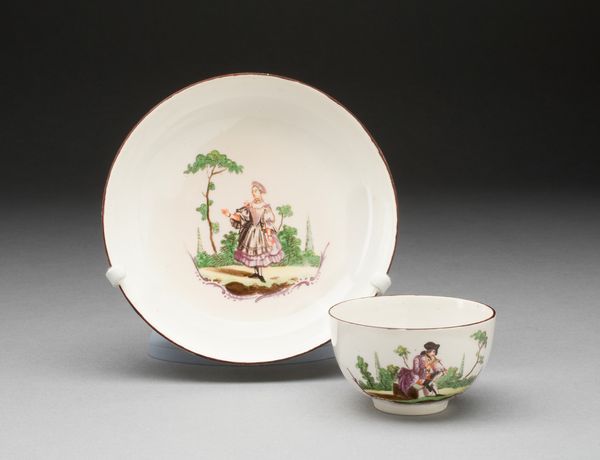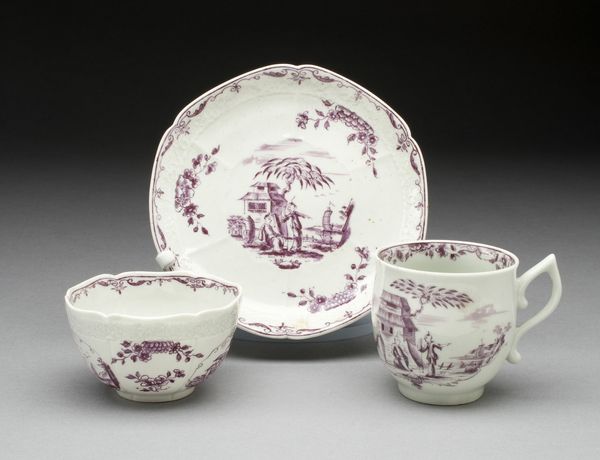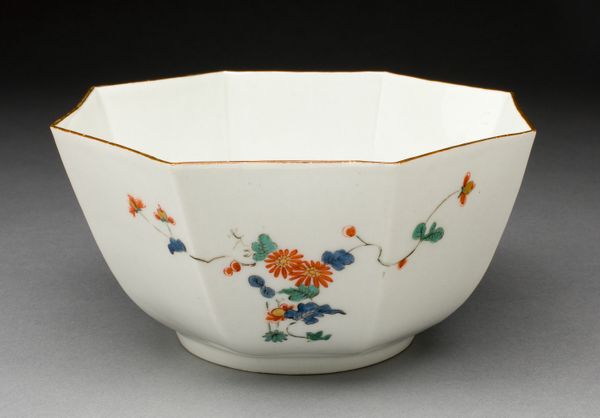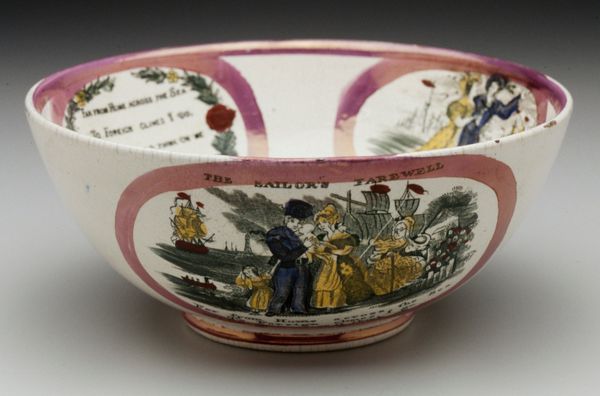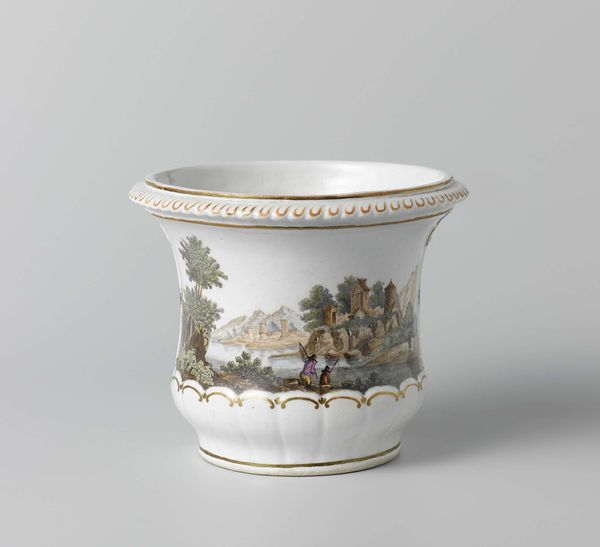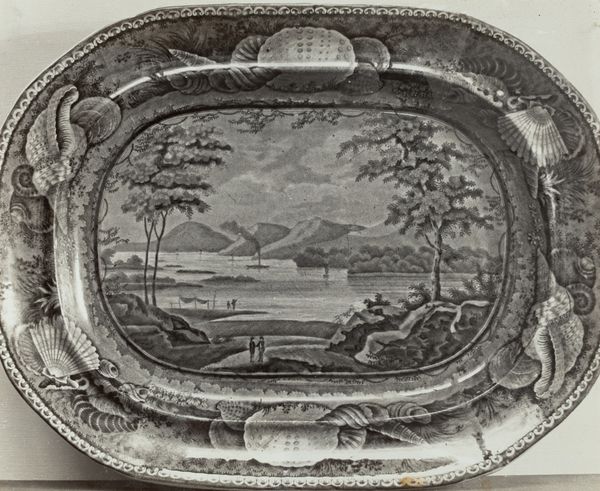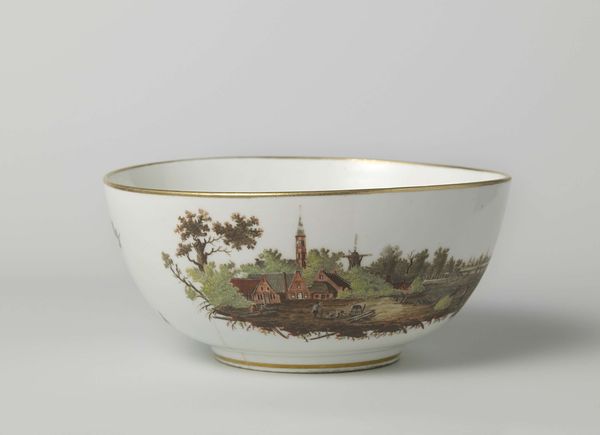
ceramic, porcelain
#
medieval
#
landscape
#
ceramic
#
porcelain
#
figuration
#
genre-painting
#
decorative-art
Dimensions: Overall (teabowl .2): 1 11/16 × 3 3/16 in. (4.3 × 8.1 cm); Diameter (saucer .3): 4 1/2 in. (11.4 cm)
Copyright: Public Domain
Editor: Here we have a Meissen porcelain teabowl and saucer, crafted sometime between 1710 and 1725. I’m really struck by the monochromatic scenes that adorn each piece. What can you tell me about this work? Curator: What grabs me is the very specific social conditions that enabled its production. Meissen porcelain, remember, was the first European hard-paste porcelain, a direct challenge to the Asian monopoly. This wasn't just about artistic skill; it was about industrial espionage, alchemical research, and the socio-political drive to replicate and then compete with lucrative Chinese exports. Editor: So, the act of *making* the porcelain itself becomes a statement? Curator: Absolutely. Consider the labor involved. From the miners extracting the kaolin clay to the artisans meticulously painting these tiny scenes, each step reflects a complex hierarchy and the intense division of labor within the manufactory. Are these landscape and figurative elements just decorative, or do they reference back to a certain owner, or class aspiration? Editor: It's fascinating to think about this delicate teacup embodying such heavy social and economic forces. You've shifted my focus from just aesthetic appreciation to considering the broader material context. Curator: And even further – How the product itself creates taste and demands within an expanding global market. We must question the values ascribed, and what and whose labor it truly represents.
Comments
No comments
Be the first to comment and join the conversation on the ultimate creative platform.
